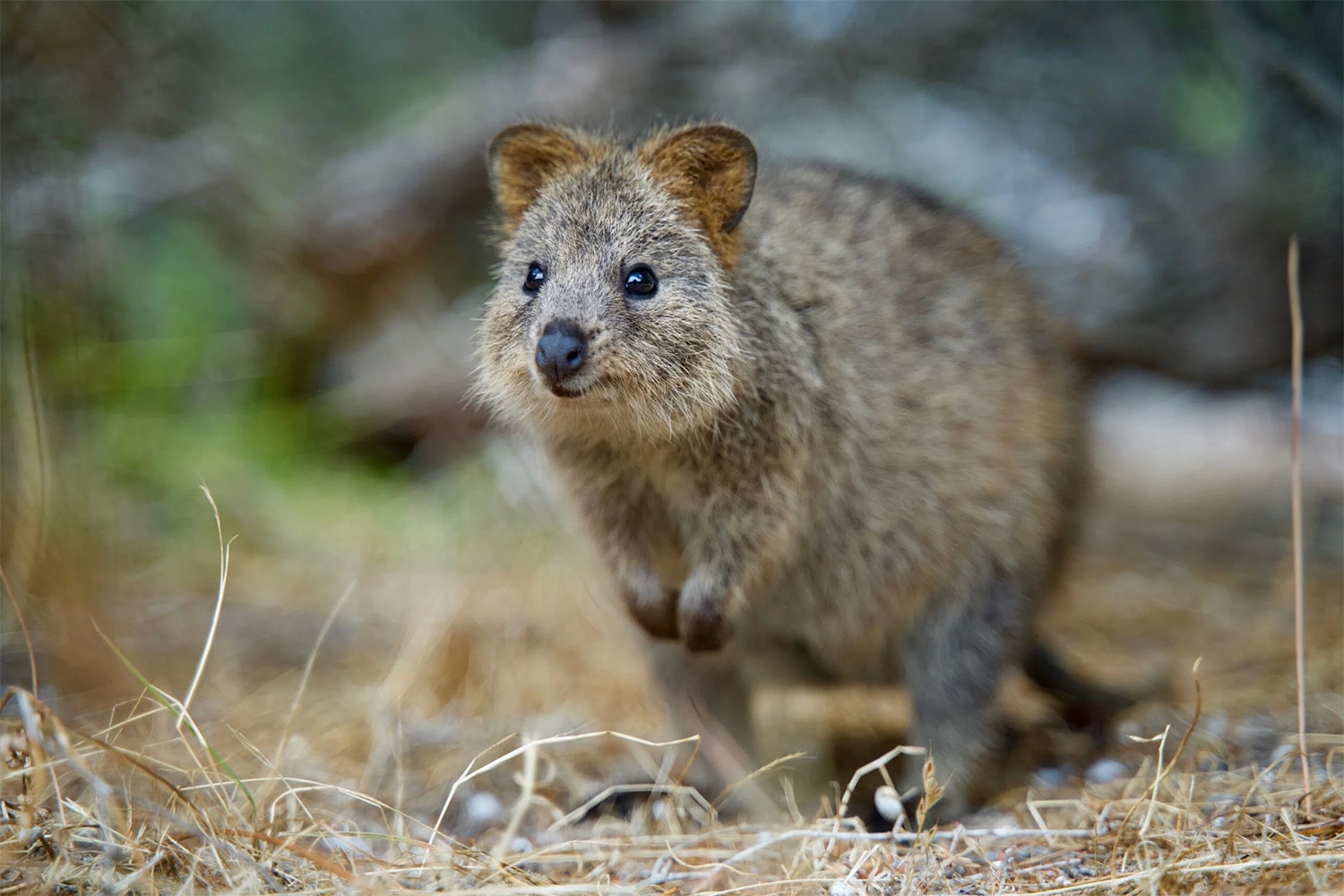
32 interesting facts about quokkas
- 👁️ 336
Quokkas, often dubbed the “world’s happiest animals,” are small marsupials native to Australia, capturing hearts worldwide with their friendly faces and curious nature. These adorable creatures have gained fame on social media for their seemingly smiling expressions and photogenic poses. However, there’s much more to quokkas than just their cute appearance. They are fascinating animals with unique behaviors, ecological roles, and survival strategies that make them an interesting subject of study. Despite facing threats from habitat loss and predators, quokkas have adapted to their environment in remarkable ways. Here are 32 interesting and informative facts about quokkas that shed light on their characteristics, habitat, and lifestyle.
- Quokkas are native to small islands off the coast of Western Australia, including Rottnest Island, which is a popular tourist destination.
- They belong to the marsupial family, which means female quokkas have pouches where their young, called joeys, develop.
- Quokkas are nocturnal animals, mostly active at night when they search for food.
- Their diet mainly consists of leaves, grasses, and small plants.
- Quokkas can go long periods without fresh water by obtaining moisture from their food.
- They have a relatively short lifespan in the wild, living up to about 10 years.
- Quokkas use their powerful hind legs to hop, similar to kangaroos, but they can also walk on all fours.
- The “smiling” appearance of quokkas is actually due to the shape of their mouths and does not necessarily reflect their emotional state.
- Adult quokkas are about the size of a domestic cat.
- Quokkas practice a unique survival strategy called “swamping,” where mothers will throw their joeys at predators to escape.
- They have a low reproductive rate, with females typically giving birth to only one joey per year.
- Joeys stay in their mother’s pouch for about six months before venturing out.
- Quokkas are very good swimmers and can use water to escape from predators.
- Despite their friendly demeanor towards humans, quokkas are capable of biting if they feel threatened.
- Rottnest Island was named after quokkas by Dutch explorer Willem de Vlamingh, who mistook them for giant rats and named the island “Rattennest” (Rat’s Nest).
- Quokkas have a limited distribution on the mainland due to predation and habitat destruction.
- They have little fear of humans and can often be approached closely, making them a popular attraction.
- Quokkas recycle a small amount of their feces by re-ingesting it, a process that helps them extract maximum nutrients from their food.
- The fur of quokkas is coarse and brown, with lighter underparts.
- Quokkas are considered vulnerable to extinction by the International Union for Conservation of Nature (IUCN).
- They are protected by law in Australia, with conservation efforts in place to preserve their habitat and population.
- Quokkas can create various vocalizations, including grunts, clucks, and hisses, to communicate with each other.
- They are solitary animals but can often be seen in small groups during feeding.
- Quokkas have a keen sense of smell, which they use to find food and recognize other quokkas.
- The gestation period for a quokka is about one month, after which the joey is born and climbs into its mother’s pouch.
- Unlike some marsupials, quokkas do not have a true placenta to nourish their young during development.
- Quokkas have been observed using caves and dense vegetation as shelter during the day.
- Their predators include birds of prey, foxes, and cats.
- Quokkas have adapted to survive in a range of habitats, from coastal areas to inland forests.
- Conservation programs for quokkas include habitat restoration, predator control, and research into their ecology and biology.
- The quokka population on Rottnest Island is estimated to be around 10,000-12,000 individuals.
- The first recorded description of quokkas was made by a European in 1696 by explorer Willem de Vlamingh.
Quokkas are much more than just adorable animals; they are resilient and fascinating marsupials that have adapted to thrive in their natural habitat. Despite facing several threats, ongoing conservation efforts aim to ensure that these cheerful creatures continue to inhabit the Australian landscape for generations to come. Their unique behaviors, diet, and reproductive strategies make them an integral part of the ecosystem and a subject of interest for wildlife enthusiasts and researchers alike. As we learn more about quokkas, it’s important to continue supporting measures that protect their habitat and ensure their survival.
Quokkas, often dubbed the “world’s happiest animals,” are small marsupials native to Australia, capturing hearts worldwide with their friendly faces and curious nature. These adorable creatures have gained fame on social media for their seemingly smiling expressions and photogenic poses. However, there’s much more to quokkas than just their cute…